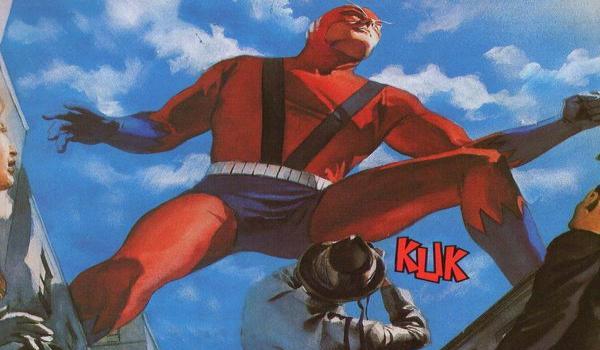Marvels is a masterpiece, plain and simple.
Written by Kurt Busiek and illustrated by Alex Ross, this four-issue miniseries takes a “fly on the wall” approach to exploring the history of the Marvel universe. It’s quite a testament that such an innovative and celebrated comic, which alludes to many classic Marvel storylines involving its vast array of powerful heroes and villains, has a normal, everyday civilian as its protagonist. Not only does the comic offer a fantastic read, in which fans can experience the extensive history of Marvel’s characters through the impeccable artwork of Mr. Ross, but Busiek’s writing is sharp, thrilling, and poignant. By putting readers in the shoes of the everyman, they are given an unprecedented look into how daunting it would be if mankind actually did coexist with superhumans.
Starring Phil Sheldon, a photographer with absolutely zero superpowers, Marvels begins back in the 1930’s when Marvel’s first superheroes debuted in comics. Beginning with the introduction of the original Human Torch and Namor the Sub-Mariner, Busiek eventually showcases plenty of fan favorites: from Spider-Man and the Avengers, to the X-Men and the Fantastic Four, there is by no means a shortage of superheroes in this comic. What Marvels does so incredibly well, however, is that the heroes are not the sole focus of the comic. Instead, we are the focus. As the reader experiences Sheldon’s initial astonishment upon witnessing his first superhero, we understand how the wonder ultimately grows into utter obsession as the world grows more “super” each and every day.
Another highlight of Marvels is that it serves as a historical lesson on the mythology of the Marvel Universe. In what has to be one of the most poetic, impactful prologues to a comic in recent memory, Busiek gives an oft-forgotten hero his due in the android Human Torch, who debuted way back in Marvel Comics #1 in 1939. Created by inventor Phineas Thomas Horton, the original Torch is given a soulful, Frankenstein’s Monster take by Busiek that serves as both a beginning to the comic, as well as a beginning to Marvel’s publication history.
As the comic progresses, we follow Sheldon as more and more of Marvel’s central figures debut. He follows Captain America overseas as he fights Nazis in World War II. He attends the wedding ceremony of Reed Richards and Sue Storm. He witnesses firsthand as the Fantastic Four and the Silver Surfer take on Galactus for the first time. And, in a recreation of one of Marvel’s most painfully memorable storylines, Sheldon watches on as Spider-Man fails to save Gwen Stacy at the hands of the Green Goblin.
By revolving the main story on a photographer and his relationships with the so-called “Marvels” he covers, with various intergalactic battles happening regularly throughout, Busiek is able to explore what it is that makes superheroes so spectacular in the eyes of humans.
Marvels isn’t just a rehash of the history of Marvel Comics, but also an examination on comic books as a medium and why they’ve held the attention of readers for nearly a century. In a world where the Fantastic Four casually battle monsters throughout the streets of New York seemingly on the reg, Busiek depicts just how minuscule humans become once superheroes exist. It is precisely because of this reason that the “fly on the wall” approach is not a gimmick. When Marvels exist, humans are inherently awed by their presence due to the notion that something greater is out there.
Have you read Marvels? What did you think? Tell us your opinion in the comments or on Twitter!


